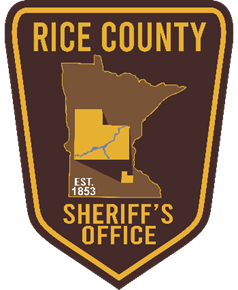Nationally, floods claim nearly 200 lives each year, force 300,000 persons from their homes and result in property damage in excess of $2 billion. In Minnesota, floods kill more people than any other weather event; 15 people have died in floods since 1993.
About 75 percent of flash-flood deaths occur at night. Half of the victims die in automobiles or other vehicles. Many deaths occur when people drive around road barricades that clearly indicate that the road is washed out ahead.
General Flood Preparedness
Before a Flood
- Assemble an emergency supply kit that includes enough provisions for you and your family to live on for a minimum of three days.
- Make an emergency plan for you and your family and share it with them.
Learn about the emergency plans that have been established in your area by your state and local government. - Get a NOAA Weather Radio. Listen for information and warnings.
- Elevate appliances such as the furnace, water heater and electric panel in your home if you live in an area that has a high flood risk.
- Consider installing “check valves” to prevent flood water from backing up into the drains of your home. As a last resort, use large corks or stoppers to plug showers, tubs, or basins.
- If feasible, construct barriers to stop floodwater from entering the building and seal walls in basements with waterproofing compounds.
- Get Flood Insurance. Property insurance does not typically cover flood damage. Talk to your insurance provider about your policy and consider if you need additional coverage. You may also want to learn about the National Flood Insurance Program at www.FloodSmart.gov
Review this Flood Safety Checklist for more ways to prepare and protect your home
Driving Safety
- Six inches of water will reach the bottom of most passenger cars causing loss of control and possible stalling.
- A foot of water will float many vehicles.
- Two feet of rushing water can carry away most vehicles including sport utility vehicles (SUV’s) and pick-ups.
What to do in a Flash Flood
Flash floods occur within six hours of the beginning of heavy rainfall. Below are some guidelines for keeping safe during a flash flood:
- Be prepared to evacuate and go to high ground immediately.
- Get out of areas subject to flooding, such as low spots, canyons, washes, etc.
- Do not attempt to cross a flowing stream on foot. Even water only six inches deep, when moving at a high rate of speed, can knock you off your feet.
- Never drive through flooded areas or standing water. Shallow, swiftly flowing water can wash a car from a roadway. Also, the roadbed may not be intact under the water.
- If the vehicle stalls, abandon it immediately and seek higher ground. Rapidly rising water may engulf the vehicle and its occupants.
- Be especially cautious at night when it’s harder to recognize flood dangers.
- Do not camp or park your vehicle along streams and washes, particularly during threatening conditions.
- Understand the difference between a Flash Flood Watch and a Flash Flood Warning
Know the Terms
- Flash Flood Watch – Flooding is possible. Tune in to NOAA Weather Radio, commercial radio, or television for information
- Flash Flood Warning – Flooding is occurring or will occur soon; if advised to evacuate, do so immediately.
Related Resources
Are you Ready? Review this Flood Safety checklist from the Red Cross.
The University of Minnesota Extension has an extensive library of disaster preparedness, response and recovery resources. This website has fact sheets, pages, guidebooks and videos with research-based tips on immediate and long-term flood issues.
For questions about water, crops, horticulture, and climatology issues call the UMN Flood Information Hotline at 1-800-232-9077, or email at fil@umn.edu
For questions about cleaning, stains, mildew, and food safety issues call the answer line at 1-800-854-1678 or email answer@iastate.edu
For information about getting flood insurance go to the National Flood Insurance Program (NFIP)
